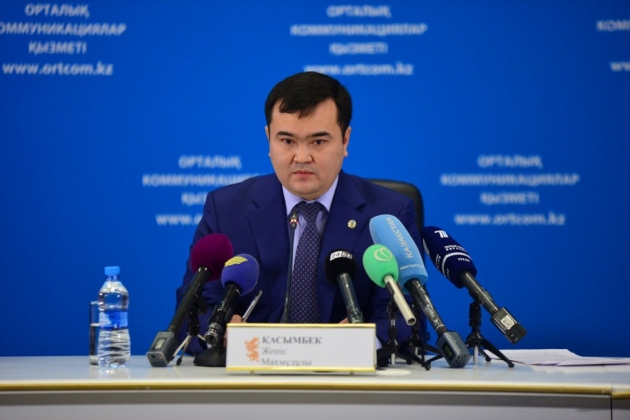ASTANA – The gradual introduction of toll highways in Kazakhstan is projected to reduce the burden on the state budget and ensure self-sufficiency for road maintenance. The toll system is planned on all roads which passed reconstruction and modernisation, said Minister for Investment and Development Zhenis Kassymbek at the Nov.1 government meeting dedicated to transport and logistics infrastructure development.
The measures will increase the volume of fees under the current toll roads tariffs to 33 billion tenge (US$97 million) by 2020, he added. The length of toll roads is expected to reach up to 7,000 kilometres by 2022. Roads of national significance are being constructed and renovated and maintenance quality and safety issues will become relevant.
In a five-year period, about 5,000 traffic roads were renovated, more than 1,700 kilometres of rail roads constructed and the Aktau airport and sea port upgraded, reported the ministry’s press service.
Transport infrastructure development is one of the important indicators which directly affects the annual Global Competitiveness Index assessment. In the latest figures, Kazakhstan lost 11 positions in this category, but has improved its position by 19 points over the past five years.
“There are about 8,000 vehicles per day passing the Astana–Schuchinsk highway today. Thirty percent of this number are passenger cars with the rate of one tenge (US$0.002) per kilometre. Lorries account for 70 percent with 15 tenge (US$0.044) per kilometre. The current rate is lower than that of neighbouring countries. In particular, this tariff rate for cars (converted to the national currency) totals five tenge (US$0.014) in Russia and 15 tenge (US$0.044) per kilometre in China. The average tariffs for freight transport are 50 tenge (US$0.14). We will collect around 1.2-1.3 billion tenge (US$3.5-3.8 million) per year, which fully covers the road maintenance costs,” said Kassymbek.
In the first phase, nearly 260 service facilities are expected to be put into operation on the main roads by 2020 as part of the Nurly Zhol programme.
“The location map of objects was approved in agreement with the local akimats (regional administrations). Ninety-one facilities out of 260 will correspond to the A and B categories, in which the entire range of services will be provided including hotel services and shopping centres. Other facilities in the C category will provide parking, food items and retail trade,” he added.
The existing 2,467 disparate objects of roadside service do not meet the national standard’s requirements.
“About 2,500 service facilities currently do not meet those standards. We plan to do inventory auditing for compliance with the requirements of the B, C and D categories in cooperation with local authorities at the end of the year. We will develop the measures to assist roadside service owners to conform to the minimum requirements of the approved standard and introduce the proposals to the government. The concessional lending opportunities are needed as part of the Business Road Map 2020. We will work to address issues connecting utilities networks (electricity, water and sewage) to these objects in cooperation with the local executive bodies,” said Kassymbek.


